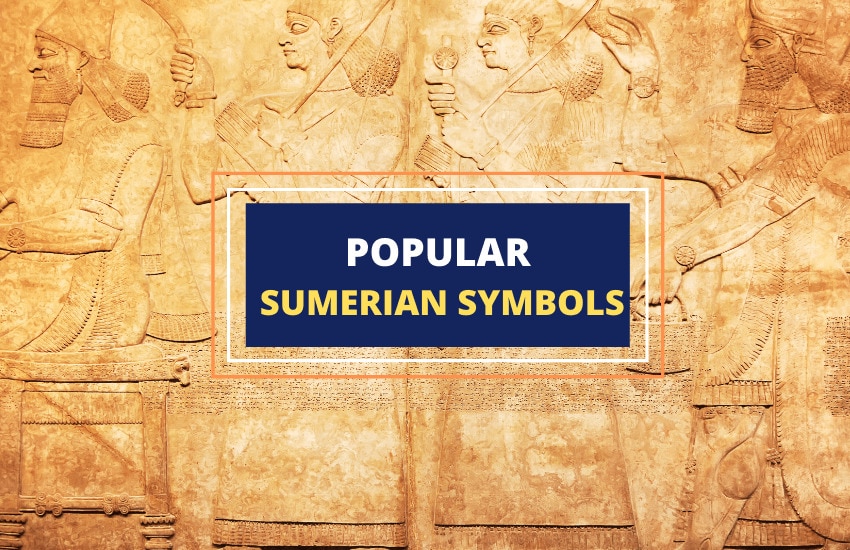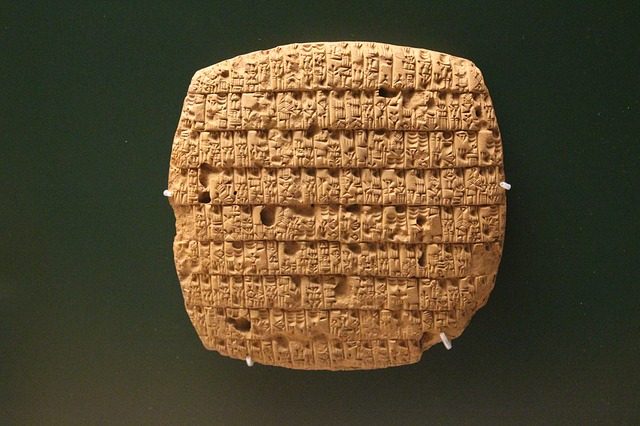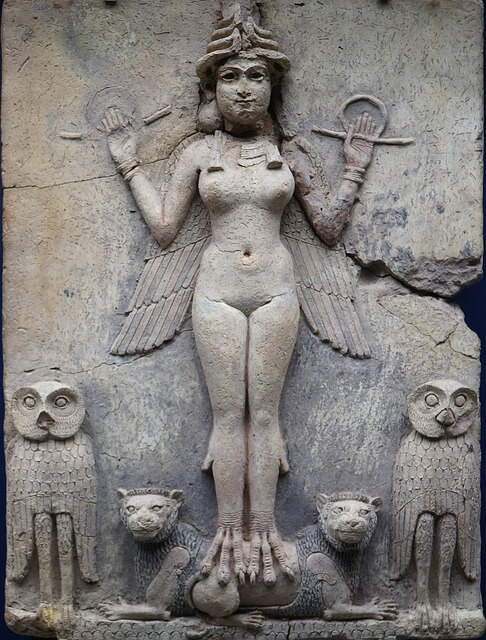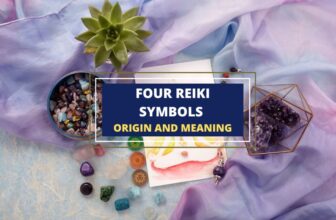
Table of Contents
One of the earliest civilizations known to history, the Sumerians lived in the Mesopotamian region of the Fertile Crescent, from 4100 to 1750 BCE. Their name comes from Sumer, an ancient region composed of a number of independent cities each with its own ruler. They’re most recognized for their innovations in language, architecture, governance and more.
The civilization ceased to exist after the rise of the Amorites in Mesopotamia, but here are some of the symbols they left behind.
Cuneiform

A system of writing first developed by the Sumerians, the cuneiform was used in pictographic tablets for the purpose of keeping records of their temple activities, business and trade, but it later turned into a full-fledged writing system. The name comes from the Latin word cuneus, meaning wedge, referencing the wedge-shaped style of writing.
The Sumerians wrote their script using a reed stylus to make wedge-shaped marks on soft clay, which was then baked or left in the sun to harden. The earliest cuneiform tablets were pictorial, but later developed into phonograms or word concepts, especially when used in literature, poetry, law codes and history. The script used around 600 to 1000 characters to write syllables or words.
In fact, the famous literary works of Mesopotamia such as the Epic of Gilgamesh, The Descent of Inanna, and the Atrahasis were written in cuneiform. The form of writing itself could be adapted to different languages, so it’s no wonder why many cultures have used it including the Akkadians, Babylonians, Hittites and Assyrians.
Sumerian Pentagram

One of the most persistent symbols in human history, the pentagram is most recognized as a five-pointed star. However, the oldest known pentagrams appeared in ancient Sumer around 3500 BCE. Some of these were rough star diagrams scratched into stones. It’s believed that they marked directions in Sumerian texts, and were used as city seals to mark the gates of city-states.
In Sumerian culture, they’re thought to represent a region, quarter or direction, but they soon became symbolic in Mesopotamian paintings. It’s said that the mystical meaning of the pentagram surfaced in Babylonian times, where they represented the five visible planets of the night sky, and was later used by several religions to represent their beliefs.
Lilith

Sculpture was used to adorn temples and promote worship of local deities in each city-state of Sumer. A popular Mesopotamian sculpture features a goddess is depicted as a beautiful, winged woman with bird’s talons. She holds the sacred rod-and-ring symbol and wears a horned headdress.
The identity of the goddess depicted on the relief is still up for debate. Some scholars speculate that it is Lilith, while others say that it is Ishtar or Ereshkigal. According to ancient sources, Lilith is a demon, not a goddess, though the tradition came from the Hebrews, not the Sumerians. Lilith is mentioned in the Epic of Gilgamesh, and also in the Talmud.
The relief itself is called The Queen of the Night or Burney Relief and is thought to have originated in southern Mesopotamia in Babylon around 1792 to 1750 BCE. However, others believe that it originated in the Sumerian city of Ur. In any case, it’s unlikely that the exact origin of the piece will ever be known.
The Lamassu

One of the symbols of protection in Mesopotamia, the Lamassu is depicted as a part bull and part human with beard and wings on his back. They’re regarded as mythical guardians and celestial beings that represent the constellations or the zodiac. Their images were engraved on clay tablets, which were buried under the doorways of houses.
While the Lamassu became popular as protectors of the doorways of Assyrian palaces, the belief in them can be traced back to the Sumerians. It’s said that the cults of Lamassu were common in the households of the Sumerians, and the symbolism eventually became associated with royal protectors of the Akkadians and the Babylonians.
Archaeological research reveals that the symbol became important not only to the Mesopotamian region, but also to the regions around it.
Equal Armed Cross

The equal-armed cross is one of the simplest yet most common Sumerian symbols. While the cross symbol exists in many cultures, one of its earliest symbolic uses was by the Sumerians. The term cross is said to be derived from the Sumerian word Garza that means Scepter of the King or Staff of the Sun God. The equal armed cross was also the cuneiform sign for the Sumerian sun god or fire god.
The Mesopotamian god Ea, also known as Enki in Sumerian myth, has been depicted sitting on a square, which is sometimes marked with a cross. It’s said that the square represents his throne or even the world, reflecting the Sumerian belief of something four-cornered, while the cross serves as the symbol of his sovereignty.
Symbol for Beer
Featuring an upright jar with a pointed base, the symbol for beer has been found in several clay tablets. It’s said that beer was the most popular drink of the time, and some of the written inscriptions included the allocation of beer, as well as movement and storage of goods. They also worshipped Ninkasi, the Sumerian goddess of beer and brewing.
Archaeologists have found evidence of beer making which can be traced back to the 4th millennium BCE. The Sumerians regarded their beer as a key to a joyful heart and a contented liver due to its nutrient-rich ingredients. It’s likely that their beers were based on a barley concoction, though the brewing techniques they used remain a mystery.
In Brief
The Sumerians are regarded as the creators of civilization, a people who forged the world as understand it today. Much of their work has been left behind through the written works of ancient writers and scribes. These Sumerian symbols are just some of the pieces of their history, reminding us of their numerous contributions to world culture.








